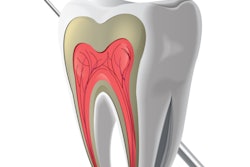Dear Endodontics Insider,
Major advancements have been made in nickel titanium (NiTi) rotary instruments in recent years. But which type of rotary instrumentation works best? In a new study in BMC Oral Health, researchers tested three types of NiTi instruments for shaping root canals, finding one that was superior. Read our Insider Exclusive.
In other Endodontics Community news, when it comes to examining images of a tooth and identifying a crack, should you use periapical radiography or cone-beam CT? Also, who is better trained to identify these cracks on images, an endodontist or a radiologist? A new study in PLOS One answers these questions. Read more here.
While hundreds of studies have documented the safety and efficacy of filling materials most often used for apical sealing, researchers from China undertook a literature review to weigh the evidence behind the materials and see if one were ideal. Their conclusions highlight the need for rigorous research and follow-up. Learn more here.
The use of pulpal biomarkers may be instrumental in developing a more accurate and biologically based diagnostic tool in endodontics, according to a new study on the presence of these biomarkers in pulpitis. However, before that can happen, biomarkers that reliably correlate with pulpal inflammation must be identified, and sample collection and analysis must be improved, the authors noted. Read our coverage here.
As single-sitting root canal treatments are becoming more common, an issue with this procedure is the occurrence of endodontic flare-ups afterward. Researchers from India studied 200 patients divided by age group to see how often these patients experienced endodontic flare-ups after root canal. Learn more here.


















